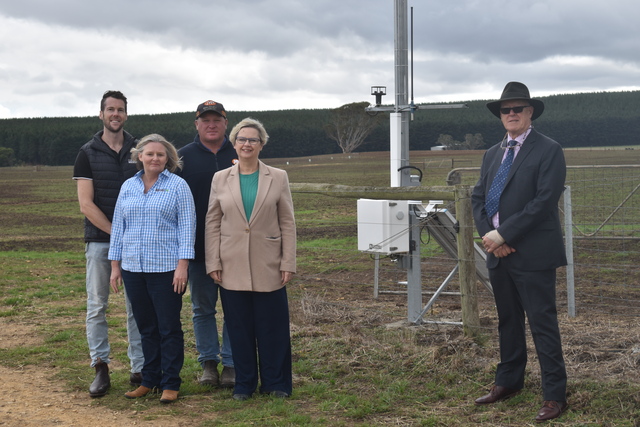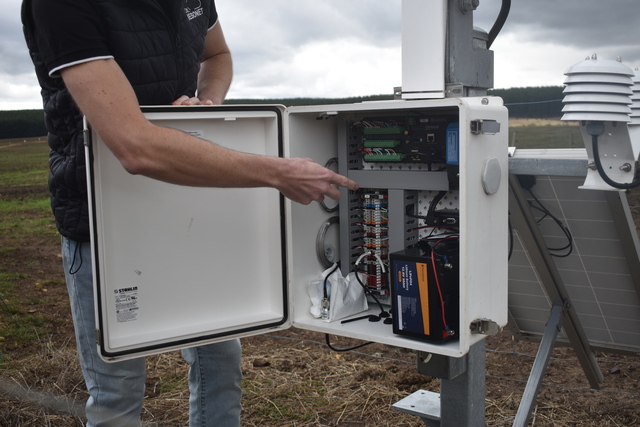
Melanie Riley
FARMERS in the Limestone Coast now have access to the Mesonet weather network.
The Mesonet infrastructure, maintained and operated by COtL, provides real-time data on conditions that could lead to spray-drift, equipping farmers with the information to avoid causing damage to off-target crops, rainwater tanks and the natural environment.
The network is set to benefit many regional primary producers, and will assist in empowering them to know the safest time to apply agrichemicals.
Mesonet systems provide more information than what is generally available with each station able to differentiate between hazardous and non-hazardous inversions.
The network also provides other useful weather data such as information about fire danger, rainfall, frost, humidity, and crop phenology metrics.
There are 114 stations across the entire Mesonet network, which also spans across the Mid-North and Riverland/Mallee region.
There are 43 new high resolution Mesonet stations operational across the region, and the project was undertaken by the COtL Mesonet Team in partnership with MacKillop Farm Management Group (MFMG).
Funded by the state government, $2.35 million was invested into the development of the Mesonet stations in the state’s south-east, which also covers the McLaren Vale and Langhorne Creek wine regions.
Minister for Primary Industries and Regional Development Clare Scriven spoke of the benefits of the Mesonet network.
“The opening of the Limestone Coast Mesonet is an exciting milestone,” she said.
“The expansion of the network will enable primary producers across the region to have real-time data at hand to help them make responsible and informed decisions to reduce the likelihood of spray drift.
“Spray drift can have a devastating impact on agricultural production, which is why it’s important we continue to educate and put management tools in place to address this issue.”
COtL manager of meteorological networks John Nairn encouraged local producers to get involved in using the network.
“We’ve got a stable network and we’ve been out there five years now,” Mr Nairn said.
“Three successful installs, the data is reliable and it’s very accessible, so there’s no reason why people shouldn’t be using it.
“We’re quite proud of what this small team has achieved.”
COtL Mesonet director Damon Grace was eager to look at expanding across the rest of the cropping areas in the state.
“The Mesonet is backbone infrastructure for South Australia’s agricultural regions providing high-quality ag-weather data to SA primary producers,” he said.
“The recent expansion of the Mesonet into the Limestone Coast is a boon for primary producers in the state’s south-east.”
Glencoe property owner Justin Moloney said while it is still early days, he is excited about the future benefits of the Mesonet weather network on his property.
He spoke about the impact it will have on his operations to know the wind and rain predictions for his specific area.
“We can see the hatching of the red-headed earth mites too, which is even more beneficial to us than anything,” he said.
“It’s excellent.”
It is currently available free of charge for the next few months, and it will then move to a subscription model.
Sign up now for the Limestone Coast at www.mesonet.com.au








